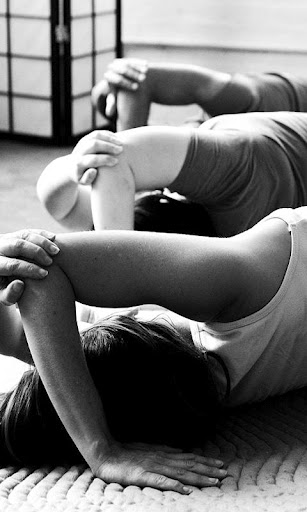Did you know that most people over the age of 45 would choose to walk around a fence instead of jumping over it? It’s hardly strange considering it might be viewed as child’s play, because in a way, it is. As adults, people train in gyms or ride to work, but rarely do they challenge their nervous system with new movement information as they did when they were growing up. During the course of life most people experience “movement amnesia” which stops them from doing activities like jumping fences, standing on their heads and climbing trees.
Incredibly the brain can re-learn these old forgotten patterns through Feldenkrais lessons whilst simultaneously improving functionality in other areas of life. Moshé Feldenkrais developed his method in order to solve a problem in his own body, by bringing awareness through the ability to regulate and coordinate movement, or in other words, by working with the nervous system.
In a child’s early development its ability to move is instrumental to both emotional and intellectual development. Even before the child develops a language, at around three years old, the movements will have already formed the infrastructure of the brain. So then we know that freedom of movement and autonomy is closely connected. From these learned ways of moving, we form habits which are economical but can also be inefficient and limiting later in life.
In order to reach effectiveness in our actions it is important that unconscious holding patterns be addressed. As Pilates instructors you know the importance of body awareness and that it can be challenging to teach a client how to cultivate their ability to sense themselves. Feldenkrais lessons allow clients to explore HOW they move. You may find clients have difficulty emulating movement or that you often need to repeat the same corrections. Ultimately, this is because organic change does not happen from an instruction to imitate a recommended model, but rather, by a series of sensory explorations that fine-tune the self-perception. This thereby creates a greenhouse effect where more efficient ways of organizing oneself can be found. An organic correction is an adjustment that the organism makes by itself in exploring different options and learning on the basis of its own experience.
But what is an ideal posture, and can we really achieve it with effort? From a biomechanical point of view, an efficient posture in vertical should require a minimum investment of effort. Below I have broken down a Feldenkrais lesson and propose the same approach can be applied in Pilates, to stimulate enhanced learning and freedom of movement.
1) Starting with a reference movement – ask the client ‘How does this movement feel now?’ For example a rotation, turning both right and left. After the lesson have them do the same thing, in order to experience the change – That’s learning – direct feedback from the body, which seldom lies, and is an example of experienced based learning.
2) By lying the client down on a mat when introducing new exercises you remove the need for balance. A minimum of muscular tonus and a feeling of safety are both important parts of any learning strategy.
3) The nervous system will take on new information and store it best if pain is avoided. You can train through your pain, but the learning and the wish to store the information from the point of the nervous system will be minimal, since pain is perceived as negative for our organism.
4) Neurological diplomacy – start by enforcing the pattern the client likes and does automatically. For example, turn to the easier side first, many times. By this accepting approach the nervous system will ease up and thereafter you can start introducing several new movement options, slowly and in small increments. Bring the client’s attention to HOW he or she is moving, what muscles are involved and how the skeleton supports the movement. One option would be the actual habit, and the new options will be further ways to organize the body. Let the client have small rests between the movements in order for the brain to store the new information. You may ask if there is a difference between the side which they have used and the other side. This sensory information will enhance the learning.
5) When the movement has been introduced lying down, bring the client up to sitting. Now introduce the same movements in sitting with as many options as possible and with full respect for the new challenges of balance and tonus.
6) Finally, provided the client is ready for it, bring them to standing and repeat the movement in the same pedagogic manner.
7) The thinking and learning from Feldenkrais lessons may also offer you a new way to organize yourself in your Pilates lessons. One learning strategy in Feldenkrais is to think the movement through before actually doing it. You may find that the quality of the movement improves immensely.
So the process of improvement includes an exploration of unused options, away from habits, enabling the organism to choose a more efficient organization on its own accord. During training, the key is to keep the focus on awareness and not to allow ambition for a higher leg, more repetitions or a deeper squat for example, to divert attention from the integrity of the technique.
With a high level of attention and low level of effort, learning is at its most efficient and will also benefit the client in his or her daily life. The wide variety of movement options stored in the brain will give the most optimal information to the muscles through the nervous system.
 Anna-Maria Broberg is the Chairman of the Swedish Feldenkrais Guild. You can learn more about her at www.somaticmind.se.
Anna-Maria Broberg is the Chairman of the Swedish Feldenkrais Guild. You can learn more about her at www.somaticmind.se.
For those of you near Stockholm Sweden, on Wednesdays 16.30 at Stockholm Pilates Center, you can participate in Anna-Maria’s Awareness Through Movement Lessons.
Edited by Jehane Lindley

